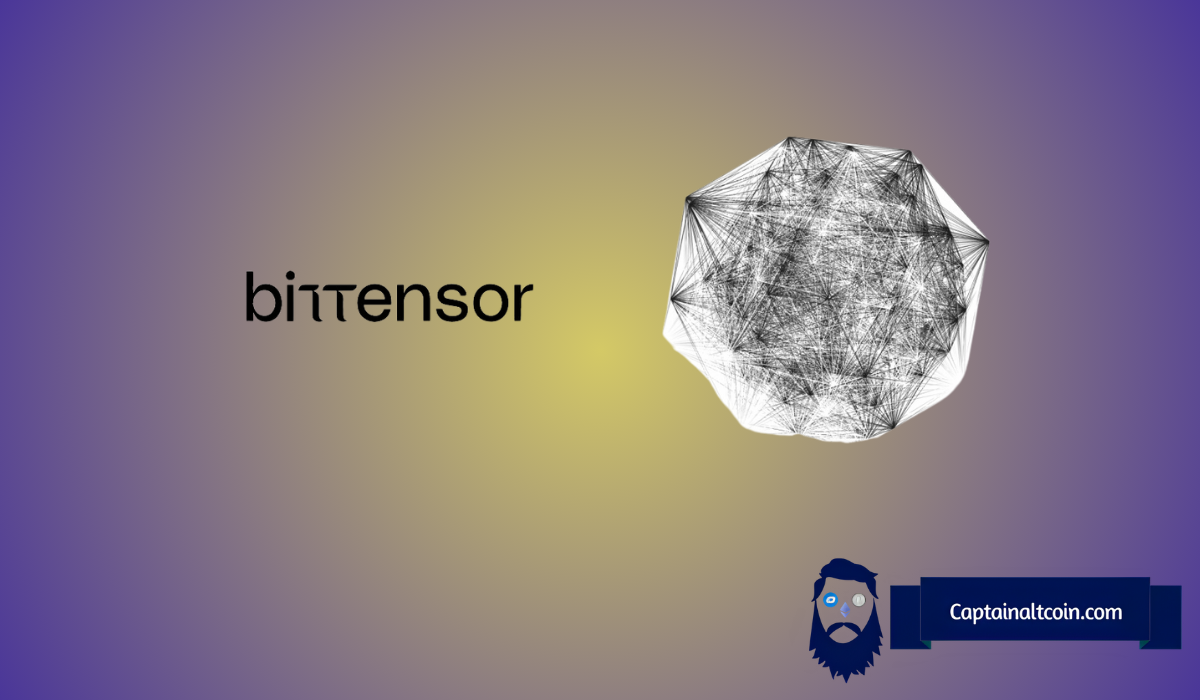
Bittensor community is buzzing with anticipation as the first halving event draws near, expected around December 10–11, 2025. Many believe this milestone could be the spark that sends TAO Price soaring.
Decode, a crypto analyst on X, believes the Bittensor token could do a 10x before the year ends. That’s a bold view, but when you look deeper into what’s happening within the ecosystem, it starts to make sense.
The upcoming halving is a major milestone for the Bittensor network. It will cut daily TAO emissions from 7,200 to 3,600, reducing the flow of new tokens entering circulation. This change is designed to slow inflation and make TAO more scarce over time.
Alpha token emissions from the subnets will also drop from 14,400 to 10,800 per day. Each subnet in the network operates like a mini AI company, and each one has its own Alpha token.
This system is different from Bitcoin, where halvings are based on block counts. Bittensor triggers its halving when total supply hits a key milestone roughly half of its 21 million TAO cap. That means the event doesn’t follow a strict calendar schedule, though this one is projected for early December.
When supply growth slows while demand stays strong, scarcity often follows. That’s what many investors, including Decode, believe could fuel the next leg of growth for the TAO token.
What you'll learn 👉
How Bittensor’s Ecosystem Strengthens the Bittensor Token
Bittensor isn’t just another blockchain project, it’s a growing AI infrastructure made up of over 125 subnets, each working on different machine learning tasks. Decode compared this structure to “125 individually tradeable AI companies,” which is a fair way to see it.
Each subnet contributes to the broader network by training models, running computations, or handling data tasks. The more active and valuable these subnets become, the more demand there is for TAO, which powers the whole system.
Decode mentioned that top subnets like Ridges (SN62) and Chutes (SN64) are valued around $100 million each. Chutes, in particular, is processing more tokens per day on OpenRouter than even Amazon Bedrock. That kind of performance gives real-world weight to Bittensor’s vision, AI networks powered by decentralized coordination rather than centralized control.
As Decode pointed out, when you compare this to older blockchains like Cardano or Dogecoin, both valued far higher despite doing little measurable work in real-world AI the Bittensor price starts to look undervalued by contrast.
I could see $TAO doing a 10x by EOY, especially as we approach the first halving. A market cap of $40+ billion would still be cheap for infrastructure like Bittensor. Compare the Bittensor ecosystem, with its 125 individually tradeable AI companies (subnets), to a single zombie… pic.twitter.com/knVCRMLvBP
— Decode (@decodejar) October 21, 2025
What Could Drive the Next TAO Price Repricing
Halving events tend to create a simple economic equation. Supply goes down. If demand holds or increases, price pressure builds upward. Bittensor’s halving is expected to do just that by cutting emissions by 50%.
There’s another factor at play: the network’s ongoing growth. As more AI developers and subnets join, staking TAO becomes more appealing. TAO holders earn rewards tied to network activity, and those rewards depend on the token’s emission schedule.
Decode pointed out that a $40 billion market cap would still be “cheap” for an ecosystem of this scale. That statement might sound ambitious, but the math adds up when you consider Bittensor’s structure and potential to serve as decentralized AI infrastructure.
Of course, fewer rewards could also make some miners and subnet operators rethink their participation, especially if network incentives shift. Yet this kind of balance between scarcity and growth is exactly what halvings are meant to test.
Why Many See TAO as a Long-Term AI Infrastructure Bet
AI is shaping up to be the biggest technology trend of the decade. Decode emphasized that Bittensor looks “very cheap” when compared to traditional AI companies with massive valuations. The token directly benefits from the network’s overall expansion, which links its value to real utility instead of speculation alone.
Sites like taostats.io now make it easy for anyone to explore how each subnet contributes to the ecosystem. It’s a good place to see why some think Bittensor could eventually rival traditional tech platforms in scale and value.
Read Also: SUI ETF Countdown Begins – How High Could Sui Price Go After Approval?
The December halving could become one of the most defining moments for Bittensor. The network will face a new phase of scarcity, and the market will decide what that means for TAO’s value.
Decode’s prediction of a possible 10x isn’t a promise; it’s an observation grounded in supply dynamics and ecosystem growth. Whether it happens this year or later, Bittensor is clearly building something far bigger than just another crypto token.
Subscribe to our YouTube channel for daily crypto updates, market insights, and expert analysis.








